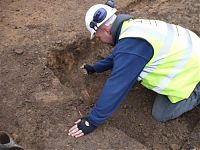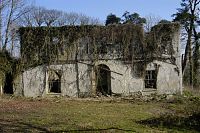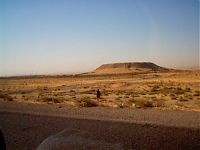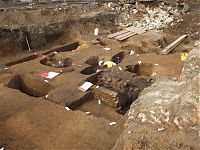Over time, evidence from the past becomes buried under dirt, rubbish, rotting vegetation and soil. Before modern rubbish collection and landfill sites, rubbish was buried near to your house, sometimes after laying around above ground for quite a while. Planning laws did not exist, and shoddy building techniques were common – houses often fell down. Houses built of wood burnt down easily and sometimes rotted in the damp climate of Britain. Often these buildings were left to decay, or were pulled down and houses built on top or nearby.
Sometimes things get buried because of sudden changes in the landscape such as flooding, volcanic eruptions or earthquakes. Pompeii is an example of how quickly things can be buried. Mount Vesuvius erupted over two days in August AD79, burying the wealthy Roman city of Herculaneum and neighbouring Pompeii under piles of ash and rubble that preserved the archaeology.
In some countries, huge mounds called tells built up over time, containing layer after layer of demolished houses and rubbish, with new buildings just constructed over the top. A tell consists mostly of architectural remains – stone, mudbrick and loam, as well as domestic and industrial waste. Tells are most commonly found in Near Eastern archaeology, although there are also examples from Serbia, Romania and Bulgaria.
To get at the archaeological evidence, archaeologists dig through these layers of built-up soil and dirt to try to understand the processes through which the layers were built up over time, and to find any artefacts buried within the layers.
- By: Lorna Richardson |
- Feb 13, 2008
- Share



